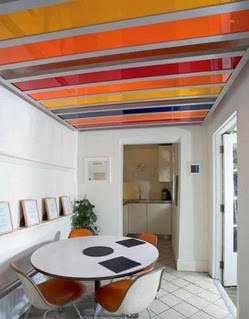GILLICK: Now, the problem with all this is that people could say, “Well, so what? That’s very nice. Once more, we’re at the end of ideas, or the end of history, or the end of productiveness, and it leads to a kind of self-conscious collapse . . .” But I don’t think that’s true. I think the work then becomes political or philosophical—it becomes about what you think of the profound questions of daily life.
How his work and influence are described >
Gillick’s work has had a profound impact on a contemporary understanding of how art and architecture influence, and are themselves influenced by, interpersonal communication and interactions in the public sphere.
He emerged in the early 1990s, producing a huge body of work ranging from his signature “platform” sculptures—architectural structures made of aluminum and colored Plexiglas that facilitate or complicate social interaction, questioning the procedures and logic of institutional frameworks—to wall paintings, text sculptures, and published texts that reflect on the increasing gap between utopian idealism and the actualities of the world.
His work seems quite complex and I don't feel that I fully understand it yet. Over the summer I plan to read every book I can find by and about him to try and fully grasp his work.
In the meantime, for this project, I will consider the basics of his ideas, which I think strongly relate to my current line of research.
I was researching Liam Gillick ^ and came across a reference to 'relational art' - I followed this up and parts of its description sounds completely relevant to my current work and ideas.
In his 2002 book Postproduction: Culture as Screenplay: How Art Reprograms the World, Nicolas Bourriaud describes Relational Aesthetics as a book addressing works that take as their point of departure the changing mental space opened by the internet.
Bourriaud defined the approach as "a set of artistic practices which take as their theoretical and practical point of departure the whole of human relations and their social context, rather than an independent and private space." The artist can be more accurately viewed as the "catalyst" in relational art, rather than being at the centre.
The artwork creates a social environment in which people come together to participate in a shared activity. Bourriaud claims "the role of artworks is no longer to form imaginary and utopian realities, but to actually be ways of living and models of action within the existing real, whatever scale chosen by the artist.
In Relational art, the audience is envisaged as a community. Rather than the artwork being an encounter between a viewer and an object, relational art produces intersubjective encounters. Through these encounters, meaning is elaborated collectively, rather than in the space of individual consumption.
Gillick's comment: 'I’m a passenger, not a customer' seems relevant to this.








